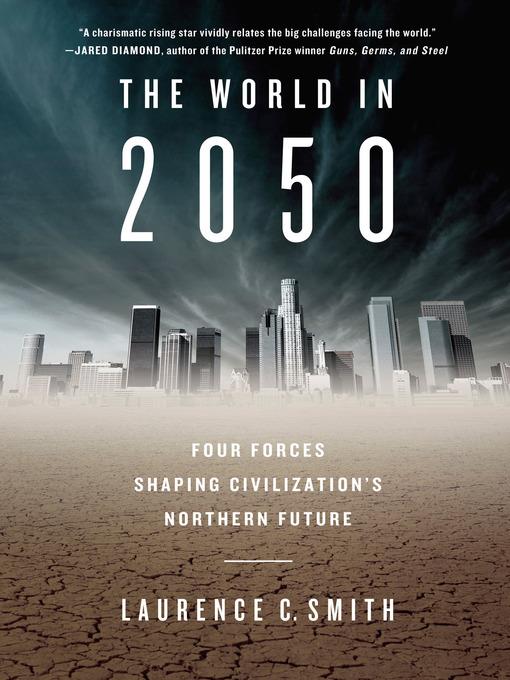
The World in 2050
Four Forces Shaping Civilization's Northern Future
کتاب های مرتبط
- اطلاعات
- نقد و بررسی
- دیدگاه کاربران
نقد و بررسی

August 16, 2010
Smith, a UCLA geography professor, explores megatrends through computer model projections to describe "with reasonable scientific credibility, what our world might look like in forty years' time, should things continue as they are now." Laying out "ground rules" for himself—including an assumption of incremental advances rather than big technology breakthroughs and no accounting for "hidden genies" such as a decades-long depression or meteorite impact—he identifies four global forces likely to determine our future: human population growth and migration; growing demand for control over such natural resource "services" as photosynthesis and bee pollination; globalization; and climate change. He sees the "New North" as "something like America in 1803, just after the Louisiana Purchase... harsh, dangerous, and ecologically fragile." Aside from his observations of "a profound return of autonomy and dignity to many aboriginal people" through increasing political power and integration into the global economy, Smith's predictions, limited by his conservative rules, are far from earthshaking, and suspending his rules for a chapter, he admits that "the physics of sliding glaciers and ice sheet collapses" as well as melting permafrost methane release are beyond current models, and that even globalization could reverse, with "political genies even harder to anticipate than permafrost ones."

Starred review from December 1, 2010
Smith (geography, Univ. of California-Los Angeles) presents a world shaped by demography, resource demand, globalization, and climate change in which people, agriculture, and political power move northward. Northern Rim countries will flourish as equatorial countries struggle. Water scarcity, heat waves, energy needs, and urban growth figure prominently in Smith's discussions, which, at their core, address the complex relationships among people, the natural world, the built environment, and technology. He effectively uses personal experiences, maps, photos, and analogies to make science accessible and interesting to the nonscientist. Although Smith offers reasons to feel upbeat about a world undergoing forceful changes, he also presents a future full of challenges and solutions that may create difficulties of their own. The notes are a useful addition for readers interested in Smith's research. VERDICT Smith demonstrates the breadth of geography and emerges as a champion of the discipline. His engaging style and understandable prose will appeal to a wide range of readers interested in social and environmental sciences. Recommended for both public and academic libraries.--Robin K. Dillow, Oakton Community Coll., Des Plaines, IL
Copyright 2010 Library Journal, LLC Used with permission.

September 1, 2010
How will civilization change over the next 40 years if humanity balloons to nine billion, sea level rises by a foot and atmospheric temperature by several degrees, and globalization continues apace? From those assumptions, Smith, a university-employed geophysicist, posits answers with a focus on the Arctic Ocean and its coastline. Familiar with the Far North through scientific field trips, Smith embeds personal observations into his predictions about the effects of boreal warming. Becoming more accessible to ships, Arctic regions in Russia, Alaska, and Canada will experience a raw-materials bonanza, with oil, natural gas, minerals, and water resources likely to be exploited as permafrost melts and summer sea ice recedes. Festooned with data, his discussions of such prospects valuably avoid either environmental or industrial advocacy and lay a factual foundation for his readers to learn how demographic and economic trends in the worlds southerly population belts might influence development of the Arctic. Concluding with a half-dozen events that could upset his forecast, Smith exhibits trend-spotting skill in this readable account of the Arctic frontier.(Reprinted with permission of Booklist, copyright 2010, American Library Association.)

























دیدگاه کاربران